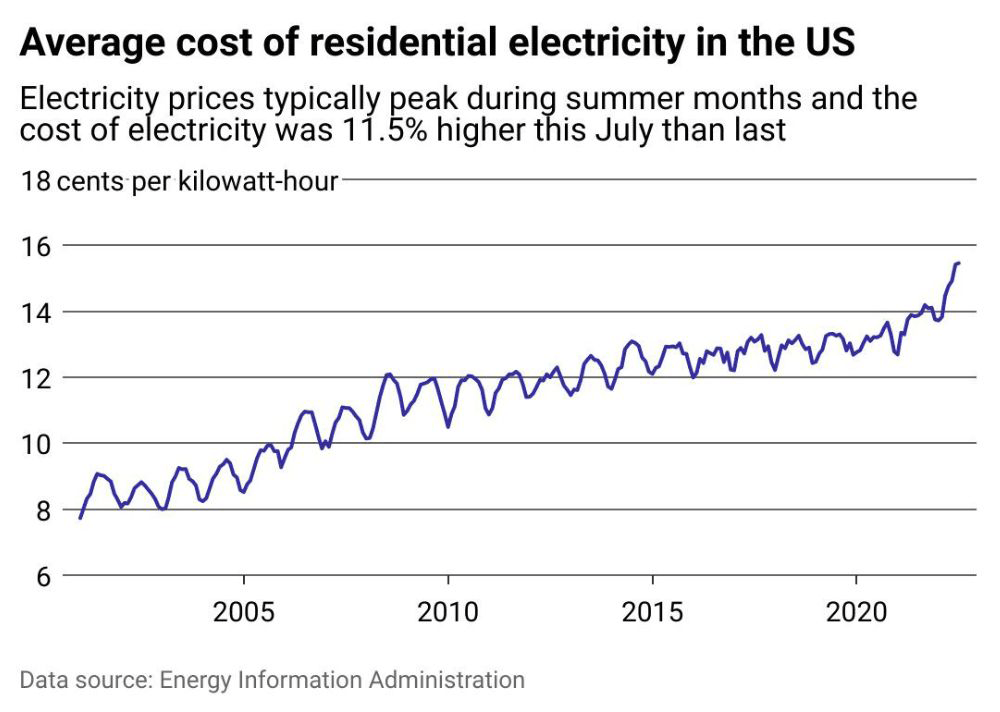This Common Appliance Is Wrecking Your Power Bill While You Sleep: You’re not blasting the heater. You haven’t touched the air conditioning. You even switched off the lights before bed. And yet, your electricity bill looks like you’re running a laundromat in the desert. What gives? Here’s the catch: Even when your appliances look like they’re off, many of them are still drawing power—quietly and steadily. These are called energy vampires, and they may be costing you hundreds of dollars a year while you sleep. Let’s break down how it works, which devices are guilty, and what you can do about it—without sacrificing your comfort or convenience.
This Common Appliance Is Wrecking Your Power Bill While You Sleep
Even when your AC and heat are off, your energy bill might be climbing—thanks to devices silently draining power while you sleep. These energy vampires are easy to ignore, but their bite adds up fast. By taking simple steps—like unplugging unused gadgets, using smart power strips, and tweaking device settings—you can cut 5%–10% off your energy bill with almost no downside. Whether you’re a homeowner, a renter, or an energy professional, it pays to stop phantom power in its tracks.

| Feature | Details |
|---|---|
| Main Offender | Devices in standby mode drawing “phantom” power |
| Average Household Cost | $165–$440 per year in wasted electricity |
| Biggest Standby Devices | TVs, cable boxes, routers, smart devices, recirculation pumps |
| Fixes | Unplugging, using smart strips, timers, and energy-saving settings |
| Energy Waste | 5%–10% of average household electricity use |
| Source | U.S. Department of Energy (Energy.gov) |
What Is Standby Power?
Standby power—also known as phantom load or vampire power—is the electricity consumed by an appliance or electronic device even when it is turned off or not actively in use. You know that little red light glowing on your TV, even after you hit the power button? That’s standby power at work. It allows your device to remain “ready” to spring to life when you hit the remote. The U.S. Department of Energy estimates that standby power accounts for 5% to 10% of residential energy use—adding up to hundreds of kilowatt-hours (kWh) per household each year.

The Hidden Costs of Standby Power
Let’s look at some real math.
Assume an average U.S. electricity rate of $0.15 per kilowatt-hour. If you’ve got just 10 devices in standby mode drawing an average of 6 watts each, here’s what happens:
- 6 watts × 10 devices = 60 watts total
- 60 watts × 24 hours/day × 365 days/year = 525.6 kWh/year
- 525.6 kWh × $0.15 = $78.84 per year
And that’s just for 10 devices. Most homes have 25–40 electronics and appliances that may be pulling power in standby mode. For many households, this results in $165 to $440 in phantom electricity costs annually.
Top Standby Power Offenders in Your Home
1. TVs, Streaming Devices, and Game Consoles
Many modern entertainment systems are designed for instant-on performance. That means they’re never truly off. A smart TV can consume up to 25 watts in standby. Game consoles in standby or “rest” mode can use between 8–15 watts.
Professional Tip: Use a smart power strip to automatically turn off connected devices when your TV is off.
2. Microwaves and Small Kitchen Appliances
Microwaves, coffee makers, and toaster ovens with LED clocks and preheating systems draw 2–5 watts even when idle. If left plugged in 24/7, that small drain adds up.
Professional Tip: If your appliance has a clock and it’s not essential—unplug it when not in use.
3. Chargers and Power Adapters
Phone and laptop chargers draw about 0.1–0.5 watts when plugged in without a device, and 1–5 watts when the device is fully charged but still connected. Multiply that by the number of devices in your home, and the cost begins to rise.
Professional Tip: Consider using a multi-device charging hub with a timer.
4. Wi-Fi Routers, Printers, and Smart Home Gadgets
Most of these devices are always on. A router alone may draw 6–15 watts 24 hours a day. Smart speakers, like Alexa or Google Home, draw about 3–6 watts, even in idle mode.
Professional Tip: Put rarely-used smart devices or printers on a timer or switchable outlet.
5. Recirculating Hot Water Pumps
These are notorious standby hogs. If left on all day, they can draw 25–90 watts continuously, totaling 219–788 kWh/year. That’s $30–$118 per year in energy costs—without adding any hot water you actually use.
Professional Tip: Install a demand-based or timer-controlled system.

This Common Appliance Is Wrecking Your Power Bill While You Sleep: How to Stop Standby Power Drain
Step 1: Identify All Devices in Standby
Walk through your house at night and look for:
- Glowing LED indicators
- Digital clocks on appliances
- Warm chargers or power bricks
- Devices with remote-control receivers
Write them down—this becomes your personal “energy vampire audit.”
Step 2: Use Smart Strips and Switchable Outlets
Smart power strips cut off electricity to secondary devices when a primary one (like your TV) is turned off. Some can be set by schedule or remote app.
Cost: $15–$30
Savings: Up to $100/year
Step 3: Unplug When Possible
If unplugging seems tedious, group devices by function. For example, all entertainment devices on one strip, all kitchen gadgets on another.
Pro Tip: Use color-coded plug labels to remember which cord powers what.
Step 4: Adjust Device Settings
Most TVs, gaming consoles, and even cable boxes have a “deep sleep” or energy saver mode. Disable “instant-on” features.
For example:
- Xbox/PlayStation: Turn off “Instant-On” in power settings
- Smart TVs: Activate “Eco Mode” or “Energy Saver”
- Computers: Turn off “Wake-on-LAN” if unused
Step 5: Measure with a Plug-in Energy Monitor
Use a Kill-A-Watt or similar monitor to test which devices draw the most energy in idle. This helps prioritize what to unplug first.

A Real-Life Example: How the Harris Family Saved $384
The Harris family of Austin, Texas had an average monthly electricity bill of $215, despite conservative AC usage. They performed an audit and found:
- Entertainment system drawing 26W standby
- Recirculating pump running 24/7
- 12 devices left charging overnight
They invested $60 in smart power strips and a $25 programmable timer. The result? Monthly savings of $32.
Annual total saved: $384
The Career Angle: Become a Home Energy Auditor
With energy prices climbing and more homeowners looking to save, home energy auditing is a fast-growing career field. Energy auditors evaluate buildings for inefficiency, identify phantom loads, and recommend fixes.
Benefits:
- Strong job growth (10%+ projected)
- Certifications available through RESNET, BPI, and local community colleges
- Typical salary: $40,000–$75,000/year
Expert Perspective
“One of the easiest ways to cut your electricity bill is to look at what’s running when you’re not. Most homes don’t need 24/7 power to every gadget. Identifying and fixing phantom loads can lead to significant, long-term savings.”
— U.S. Department of Energy Spokesperson
This AI-Powered Mirror Analyzes Your Health in Real-Time—Meet Withings Omnia
Jimmy Buffett’s Fortune Sparks Family Feud: What His $275M Estate Reveals About Trust Dangers
Feeling the Squeeze? 10 Smart Financial Moves to Survive Economic Uncertainty











